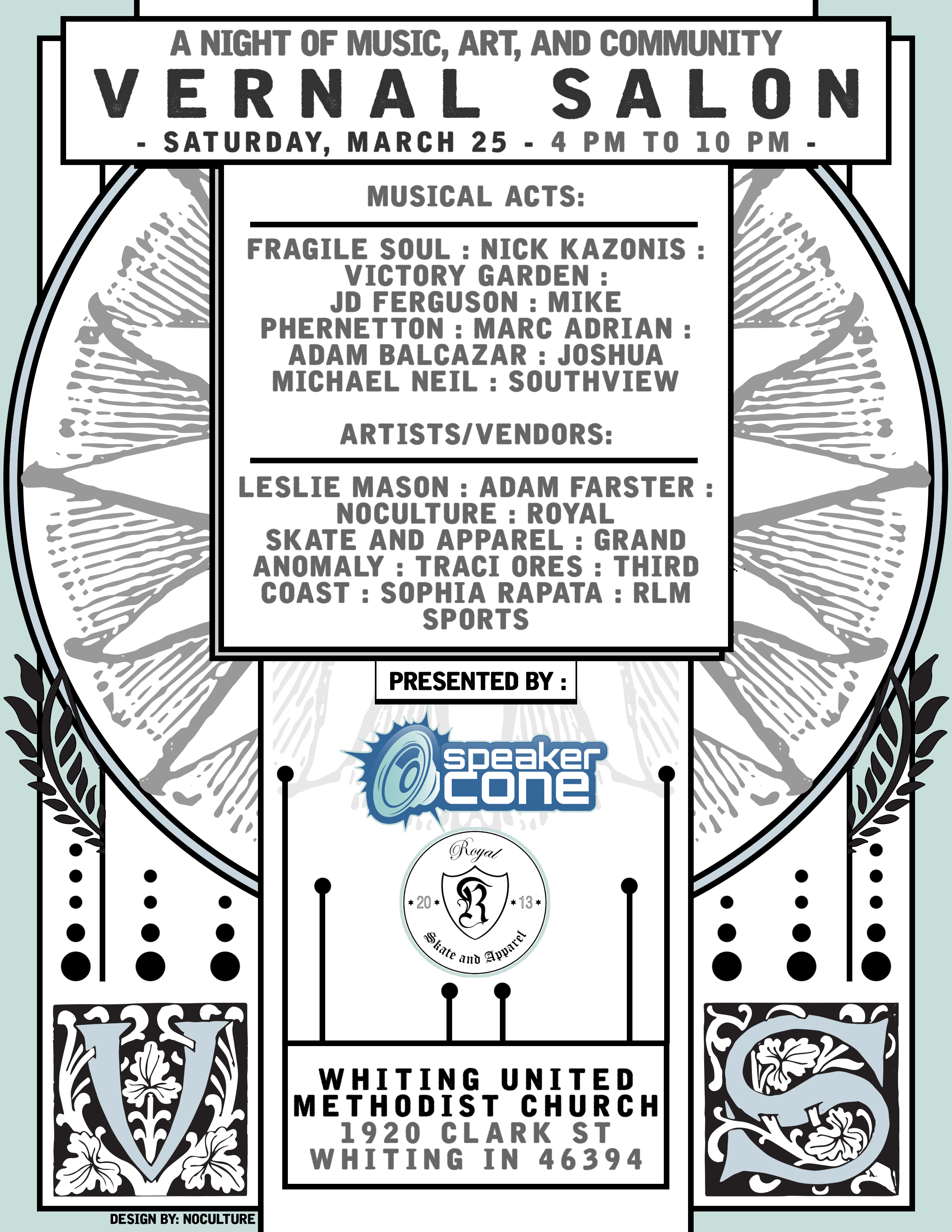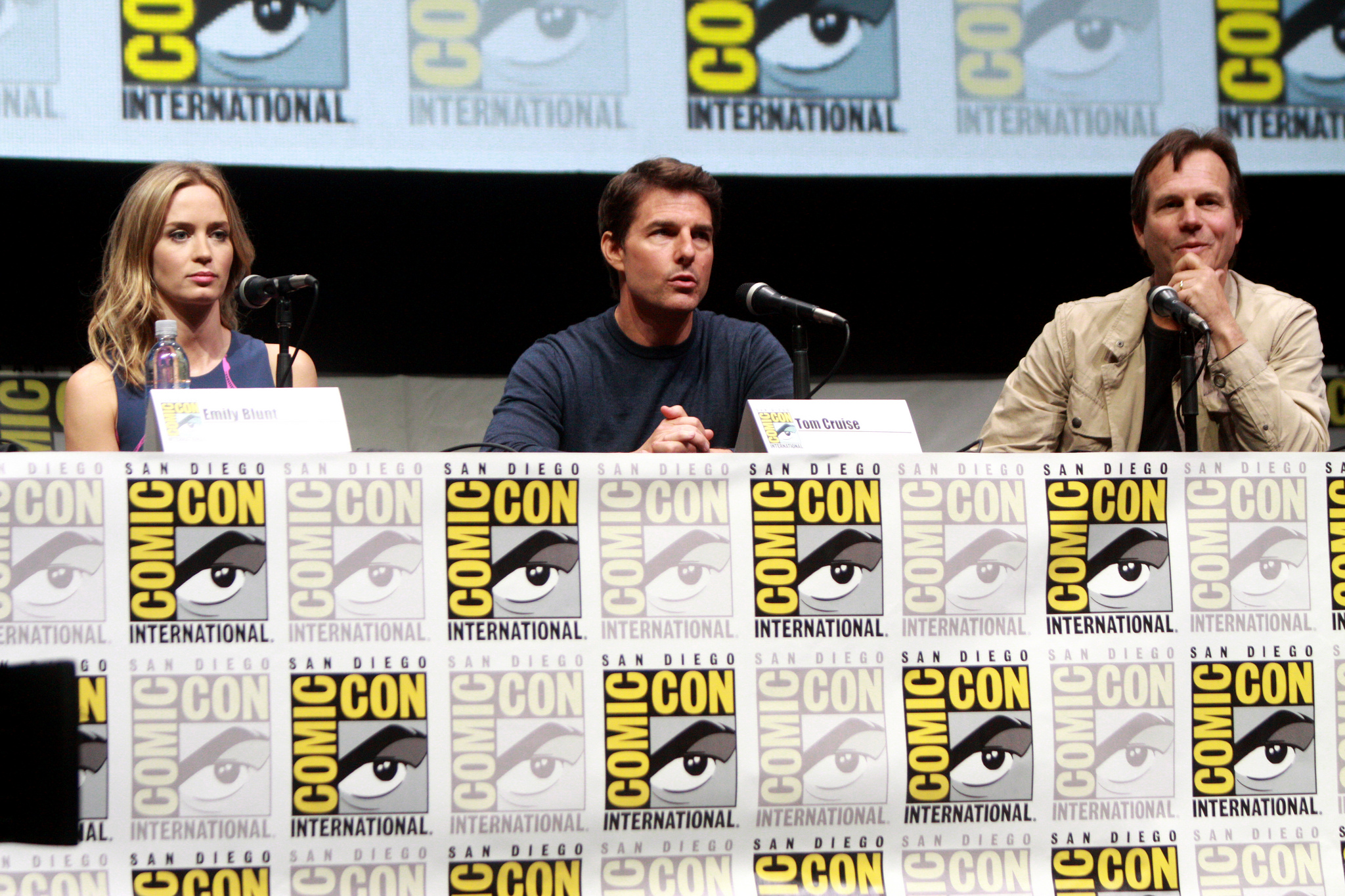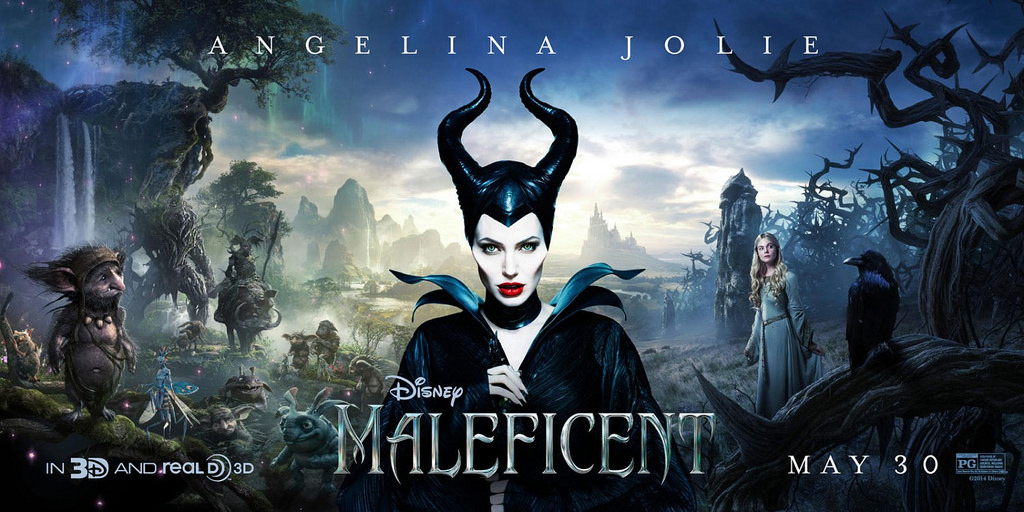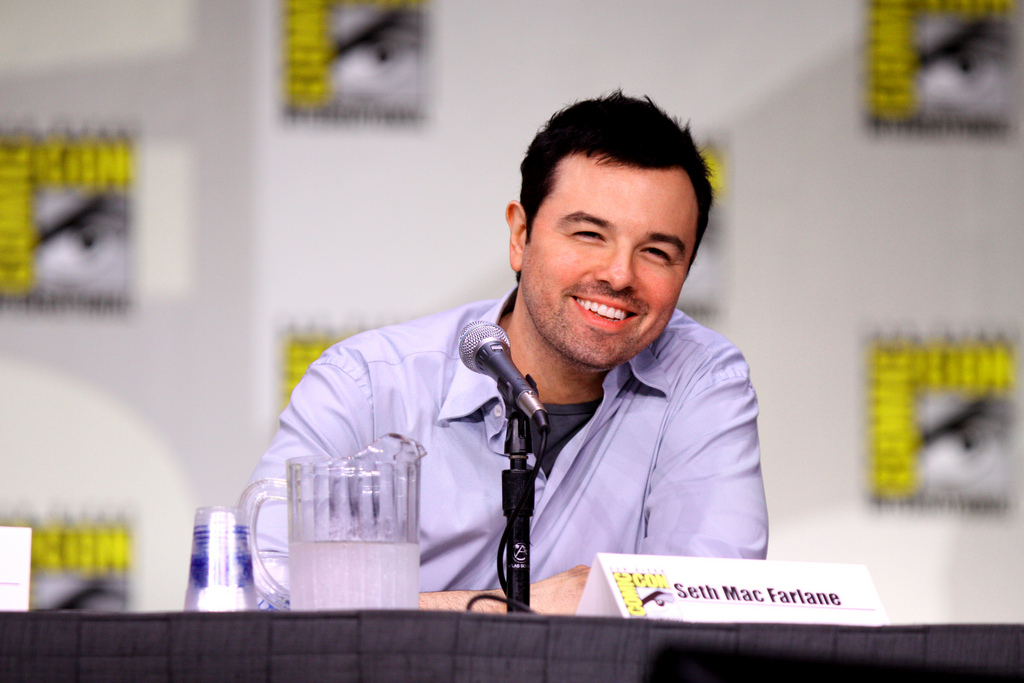
- Details
- Written by Bill Koester
- Category: Cinema
Ever play a video game and get to a level that just seems impossible to beat? Everyone who’s played a game has been there. You keep dying and starting over, each time getting a little farther (and angrier). You begin to memorize where every enemy appears and are ready for them. And then one day, after playing through it so many times that you know each step instinctively and start to hate the sight of that stage, you finally beat it. And for a brief moment it’s the greatest feeling of satisfaction imaginable.
Well, Edge of Tomorrow plays out this concept onscreen. Only it doesn’t have the stark, intense emotional highs and lows because the viewer isn’t playing, only watching. The “player” (or protagonist; I'll drop the metaphor now because the plot has nothing to do with video games) is Tom Cruise, an American military officer in a not-too-distant future where most of Europe has been overrun by aliens called Mimics. His snotty entitlement gets him demoted to the first wave of the human invasion of Europe through the beaches of France (think D-Day with soldiers wearing robotic armor). The invasion fails and Cruise is killed quickly, only to awaken back at the invasion’s launch base in London 24 hours earlier. Apparently, the Mimics can travel back in time a day, and he’s somehow harnessed that power. He uses it to relive the day over and over, training and devising a plan with a hero soldier played by Emily Blunt, who also once had this power.
The obvious observation, the one that every synopsis and review seems to be making, is that the movie is like a militaristic sci-fi Groundhog’s Day. That comparison is more apt than just the basic premise. Just like Bill Murray in the classic comedy, the film plays Cruise’s repeating experiences—screwing up in all manner of ways, wowing people with his knowledge of future events—for laughs much of the time. More than for anything else, actually. It’s surprisingly much funnier and less substantial and serious than the storyline would suggest, or even than your regular brooding action picture. But when the film gets to the scenes of excitement, it uses jump cuts to indicate repeatedly resetting time. Once in a while it’s hard to tell if what’s happening is happening for the first time or not, but mostly the film has a good and clear grasp on its time games. And it doesn’t make us sit through endless repetition of the same experiences unless there's a good reason for it, thankfully.
It all makes for a pretty good time, but it’s nothing I’d call exceptional. Even with the fun time travel structure and cool soldier suits, a lot of the battles are of the basic shaky-cam-and-explosions variety (and the beach-storming in the suits never lives up to the massive scale suggested in the initial building shots). The Mimics are rather unimaginative mashes of bio-mechanical tentacles and light. But my biggest gripe is that the final act settles for a rather standard action sequence, instead of taking advantage of its premise to give us something really imaginative. The movie uses its premise to great effect up until then, but disappointingly, there’s no mind-blowing sci-fi payoff like, say, Cruise’s 2002 film Minority Report.
But, Edge of Tomorrow is still a lot of fun. Cruise still has a movie star’s charisma to carry it, and Blunt and the supporting cast are up to the job, especially Bill Paxton, hilarious as a platoon leader. It’s a good B-movie with an A-level cast and production values.
- Details
- Written by Bill Koester
- Category: Cinema
Even the Disney classics, it seems, aren’t immune to the gritty reboot syndrome. Then again, if they’re going to go back and redo their past works, Sleeping Beauty isn’t a bad choice because, despite its reputation, it’s not one of the company’s better animated features. Think I’m wrong? Watch it again. The animation is amazingly beautiful for the time and still holds up today. But the film moves at a snail’s pace, and doesn’t have the catchy music, funny moments, or lively, memorable characters of the best Disney pictures before or since.
So Maleficent is in a curious spot. It has the aesthetic that seemingly fits the “bigger doesn’t mean better” critique. But then, it is an improvement on the original Sleeping Beauty. But it’s better not because it’s bigger, but because the story is rewritten from a more interesting angle. But it’s still not quite a success in that regard, and is an average film that merely looks very good.
Many things happen that are quite similar to the 1959 picture: Angelina Jolie’s title character puts a curse on King Stefan’s (Sharlto Copley) newborn daughter, which will cause her to prick her finger and fall into a deep sleep on her 16th birthday. But it explains that it was not out of pure evil, but revenge: you see, young Maleficent (Ella Purnell) and Stefan (Michael Higgins) were best friends until he betrayed her to become king of the human realm, which caused her to turn bad. While watching over the Princess (Elle Fanning) over 16 years, however, old Maleficent starts to have a change of heart and begins to care about the girl.
It’s a better take on the story, yes, but it’s still not very substantial, at least not enough for a whole movie. For every moment the narrative actually has some substance and emotion to it, there's at least one long, dragging scene. And even those don’t make up the entire runtime. To fill the film out, there are some darker moments, but only dark meaning “lots of CGI fighting and monsters,” not dark as in imaginative or edgy. Beyond boring and derivative, it just seems intrusive. Can you imagine if Disney added pumped-up fantasy violence into, say, Alice in Wonderland? Oh wait...
The best moments are when the movie acts like a regular children’s fairy tale. In that respect, it’s somewhat successful. The sets and some of the CGI creatures and landscapes look good, if not especially real. There are some fun and funny moments from Sam Riley as Jolie’s shapeshifting lackey and Imelda Staunton, Juno Temple, and Lesley Manville as the British fairy equivalent to the Three Stooges. Copley and Fanning are solid if slight in their roles. Jolie, however, is disappointing. She looks the part, but never really makes the character into someone you love watching onscreen even though they’re supposed to be the bad guy. The only time she really sells it is in the recreation of the character’s grand entrance, which you can see in the trailers. The rest of the time, it looks like she’s phoning it in. Also, if you’ve seen Frozen, you can kind of predict the ending, which took me right out of the climax (not that it was good, just an incomprehensible action scene).
This one’s probably adequate entertainment for the kids. But the reason Disney movies are so loved, I think, is because the studio has a real knack for making entertainment truly for all ages. Adults can enjoy their films as much as kids, not just because of nostalgia but because they’re that well done. Usually, but not this time.
- Details
- Written by Bill Koester
- Category: Cinema
Seth MacFarlane is one of the most love-him-or-hate-him figures in comedy. Aside from the morality police and all the other groups he’s offended (sometimes seemingly intentionally and jovially), he has many detractors quick to point out his material is heavy on random gags and relatively weak on story or character. Generally, he makes me laugh. And I sometimes think he doesn’t get enough credit for the cleverness of some gags, especially when he dabbles in musical comedy periodically.
But there are times when he’s just off. Sometimes his gags just aren’t very funny. Sometimes he stretches good jokes out for way too long until the humor is completely drained from it. Sometimes both happen at once, making an excruciating few seconds seem like hours. Fortunately, we don’t get any needlessly long knee-grabbing in A Million Ways to Die in the West, but unfortunately, most of the humor we do get is of the bad MacFarlane variety.
MacFarlane writes, directs, and stars in the picture as a meek sheep farmer in 1882 Arizona. After his girlfriend (Amanda Seyfried) dumps him for the local mustache retailer (Neil Patrick Harris), he tries desperately to win her back in a duel. But since he has no gunfighting skills, he enlists the help of an out-of-towner (Charlize Theron), and the two start to fall in love. Which is a problem, because Theron is unhappily married to the most fear gunslinger in the West (Liam Neeson). Yes, even with all the vulgarity and surprisingly bloody shootouts and other violence, the movie is a romantic comedy at its core.
MacFarlane is as affable as ever. Even when he’s at his most vulgar and profane, the man’s charming and hard to be disgusted with. And Neeson and Harris chew their scenes like pros. But the rest of the cast, including several of MacFarlane’s regular collaborators, aren’t much more than just there. It feels like one of those movies where the production is simply an excuse for everyone to hang out. This only seems to be an advantage in the case of Theron and MacFarlane’s dynamic; any romantic chemistry is out, but they at least know how to play off each other. But mostly, this results in a lot of phoning it in. Especially Giovanni Ribisi and Sarah Silverman, whose running gag—She’s a hooker, he’s a virgin, and they’re saving themselves for their wedding night! HAHAHA!—doesn’t get any funnier as it goes on.
All would have been forgiven if the film was funny, but the jokes are mostly misfires. The sexual, scatological, and otherwise offensive jokes aren’t very offensive at all. Everyone expects MacFarlane to be dirty. But here, instead of turning it into something clever, he’s content just to show it and stop there. Similarly, there are cameos in the picture, but instead of taking advantage of them, the movie doesn’t go any further than include them, as if it were enough to say, “Hey, remember this guy? So do we!” Other times things are too thought out and go on too long, whereas subtlety would have worked. And the jokes about how different and primitive the West was compared to today don’t translate to much laughter. I did laugh a few times, once or twice pretty hard, but I can’t tell if these parts were really good or just better than all the times I didn’t laugh. The old cliché about how the best parts are in the trailer is actually true this time, but by now we’ve seen them so much they’re not funny anymore.
The picture’s not absolutely horrible. It’s like a mediocre episode of Family Guy. But a mediocre episode only burns a half hour. The movie’s four times that length, which is a little too much to ask for what it has to offer.





